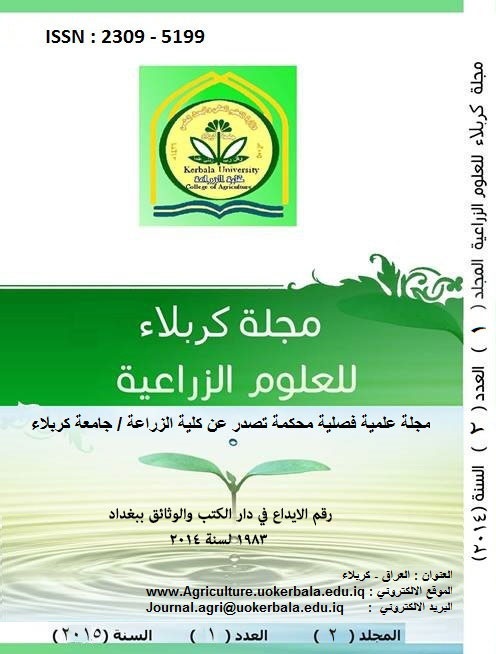Evaluation of efficacy of Salicylic acid ,and the chemofungicide Beltanol and the biological fungus Trichoderma harzianum in controlling the fungus Rhizoctonia solani isolated from Broadbean plant roots infected with the root rot disease
DOI:
https://doi.org/10.59658/jkas.v2i1.463Keywords:
الفطر solani Rhizoctonia ، الفطر harzianum Trichoderma, نباتات الباقلاء faba Vicia ، حامض السالسليك acid , Salicylic مبيد البلتانول BeltanolAbstract
This study was conducted to see the effect of each of the pesticide chemical Beltanol factor induction Salicylic acid and fungus resistance biogenic Trichoderma harzianum on the pathogenic fungus Rhizoctonia solani and its impact on the severity of injury root plants beans and some growth indicators of dry weight and the length of shoot and root,The results of laboratory tests showed that the fungus T. harzianum led to the inhibition of the growth of pathogenic fungus R.solani the middle PDA as the results showed that the use of the pesticide Beltanol concentration of 1 ml to prevent the growth of pathogenic fungus R. solani entirely on the middle either wooden canopy, the results showed after 30 days of agriculture that the treatment of pesticide Beltanol achieved the highest rate of decrease in the severity of the injury Blaftr pathogen R.solani as 25%, followed by treatment using Salicylic acid which rate the severity of the injury which 31.25% Then the treatment of fungus T. harzianum that the severity of the injury rate was 43.75% compared to the treatment of pathogenic fungus R.solani alone, which amounted to the severity of injury, where 93.75% of all transactions that achieve significant reduction in the severity of the injury fungus R.solani has reflected positively on the growth indicators studied on bean plants achieved all transactions lifted morale in the rate of dry weight and the length of the two totals shoot and root as it occupied the treatment of pesticide Beltanol ranked first in raising growth indicators as total dry weight of grouped shoot and root where 1.05 and 0.72 g, respectively, and achieved the highest lengths of grouped shoot and root, amounting to 11.5 and 9.75 cm, respectively, compared to the treatment of pathogenic fungus R.solani alone and followed the treatment pesticide use Beltanol treatment Salicylic acid treatment and then add fungus T.harzianum.
Downloads
Published
How to Cite
Issue
Section
License
Copyright (c) 2015 Copyright (c) 2024 is the Author's article. Published by the Journal of Kerbala for Agricultural Sciences under a CC BY 4.0 license

This work is licensed under a Creative Commons Attribution 4.0 International License.
Licensing Terms
All articles are published under a Creative Commons License and will be directed to the Creative Commons Attribution 4.0 International License (CC BY 4.0) That permits use, distribution, and reproduction in any medium, provided the original work is properly cited. This license also allows the work to be used for commercial purposes.
Use by both non-commercial and commercial users
This content is licensed under a Creative Commons Attribution 4.0 International (CC BY 4.0) license, permitting use by both non-commercial and commercial users. Individual users may access, download, copy, display, and redistribute the articles to colleagues, as well as adapt, translate, and text- and data-mine the content, subject to the following conditions:
- The author's moral rights, including the right of attribution and the right to protect their work from derogatory treatment, are respected.
- Where content in the article is identified as belonging to a third party, users must ensure that any reuse complies with the copyright policies of the owner of that content.
- If the article content is reused for research or educational purposes, users should maintain a link to the appropriate bibliographic citation, including the DOI and a link to the published version on the journal's website.

